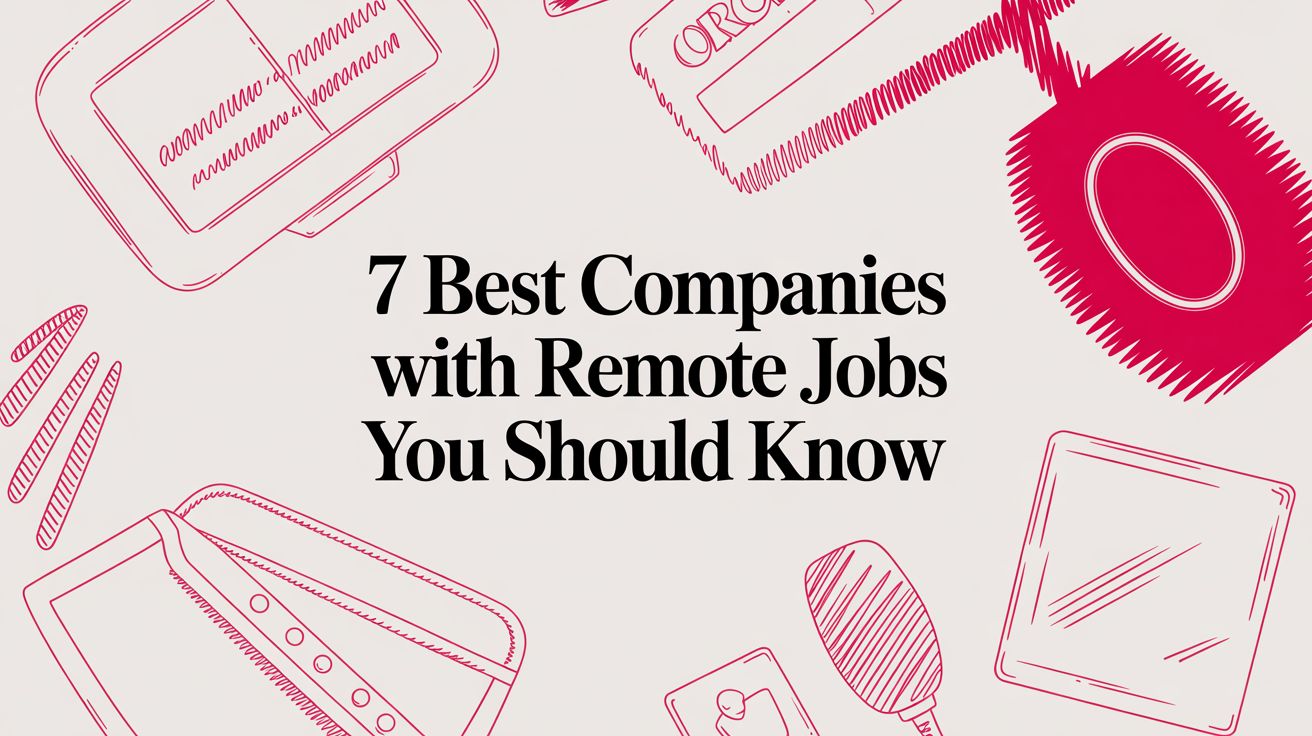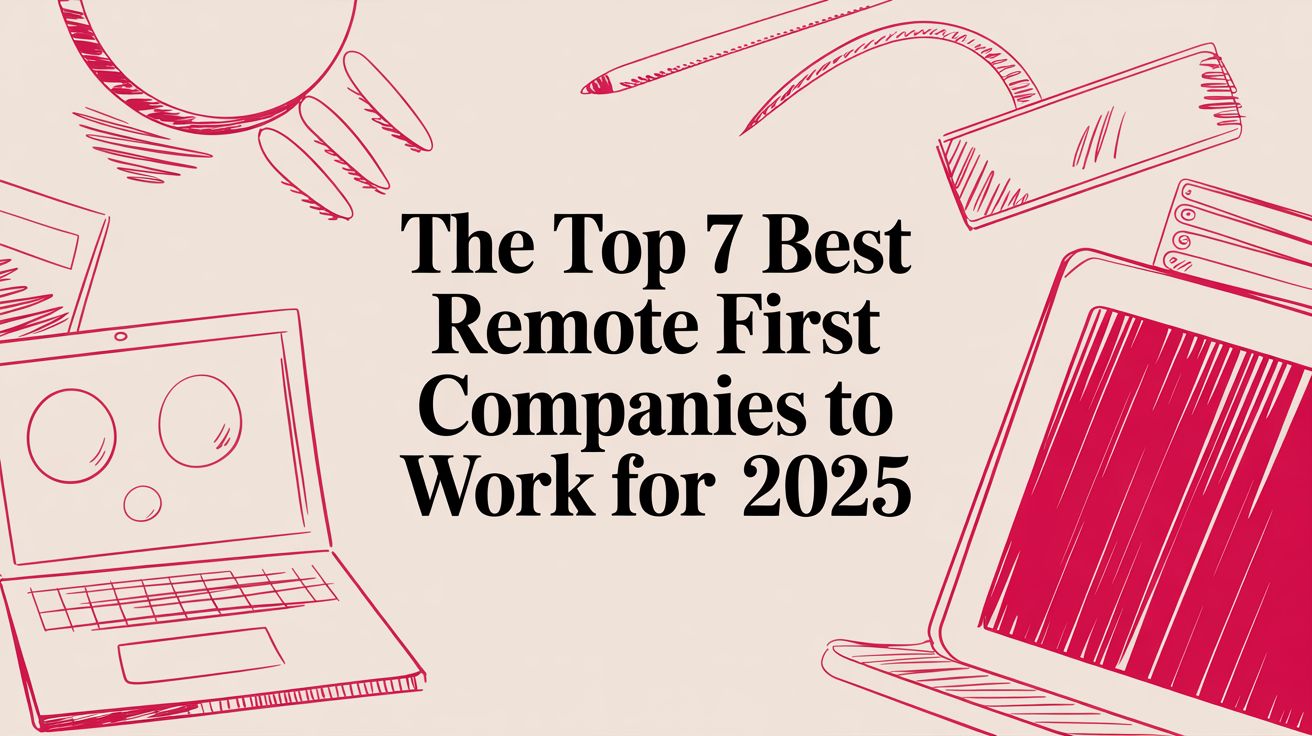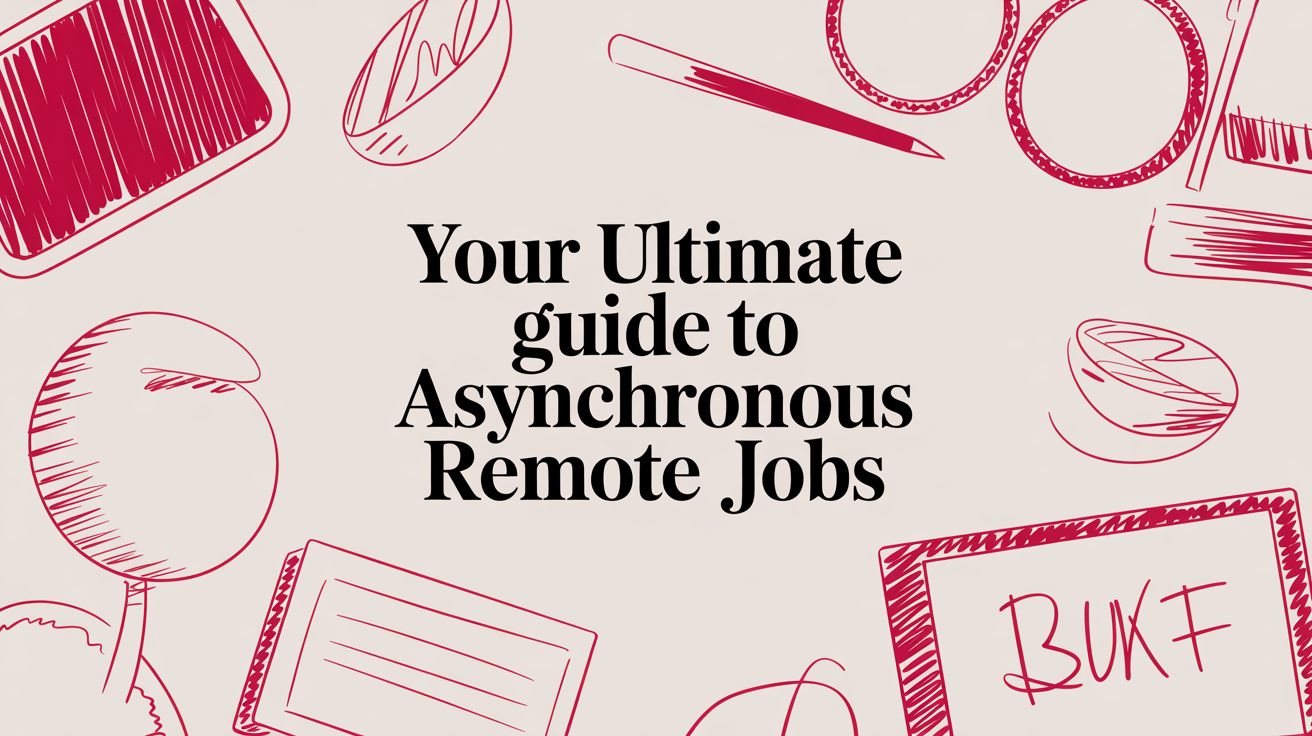Master the One Way Interview: Tips to Stand Out & Succeed
Max
Decoding the One-Way Interview: What Makes Them Different

One-way interviews represent a significant shift from traditional interviews. Instead of a live conversation, candidates answer pre-recorded questions at their convenience. This asynchronous format offers both distinct advantages and challenges for job seekers. Preparation, presentation, and technical skills become paramount. Let’s explore these key differences.
Asynchronous Communication: A New Interview Landscape
The most apparent difference is the absence of real-time interaction. In a traditional interview, you can connect with the interviewer, observe their reactions, and tailor your responses accordingly. One-way interviews, however, require you to anticipate potential follow-up questions and provide complete answers without immediate feedback. This necessitates a different communication approach, emphasizing clarity and conciseness.
Emphasis on Preparation and Presentation
One-way interviews prioritize thorough preparation. You have the benefit of time to formulate thoughtful answers. However, this also eliminates second chances to make a first impression. Your recorded responses become a permanent record of your skills and qualifications. This underscores the importance of practicing your answers, ensuring high-quality audio and video, and presenting yourself professionally, much like preparing for a presentation.
Leveling the Playing Field: Accessibility and Flexibility
One-way interviews offer increased accessibility and flexibility, particularly for remote job seekers. The rise of one-way video interviews has become a notable trend, largely influenced by the pandemic’s impact on work dynamics. This shift benefits both recruiters and candidates. Candidates can complete interviews at their own pace and preferred location, while recruiters can efficiently screen a larger pool of applicants. Learn more about this growing trend here. This format can also help mitigate bias by allowing hiring managers to concentrate solely on the content of your responses.
The Tech Factor: Embracing Digital Tools
One-way interviews rely heavily on technology. From maintaining a stable internet connection to navigating the interview platform, technical competence is essential. This includes understanding the recording software, adhering to time limits for each question, and resolving any technical issues that may arise. Familiarity with the technology can significantly reduce stress, allowing you to focus on showcasing your qualifications. Mastering these technical aspects is key to a successful one-way interview experience.
The Rapid Rise of One-Way Interviews: Industry Transformation
One-way interviews are quickly becoming a standard hiring practice. This approach has evolved from a temporary solution during the pandemic to a key component of recruitment across various sectors. This shift is driven by numerous factors, including cost savings and access to a larger talent pool. But what’s behind this widespread adoption?
Industry Adoption: From Tech to Healthcare
One-way interviews are particularly prevalent in fast-moving industries like tech, where speed and efficiency are highly valued. Startups and established tech companies use these interviews to quickly sift through a large number of applicants, especially for technical positions. But it’s not just the tech industry. Sectors like healthcare, with its demanding schedules and geographically dispersed professionals, are also adopting this format. This allows healthcare recruiters to easily connect with qualified candidates, no matter where they’re located.
Reshaping Hiring Metrics: Time and Reach
One-way interviews are significantly impacting how we measure hiring success. Time-to-hire, for instance, has been drastically reduced. Processes that once took weeks can now be completed in days, streamlining the entire recruitment cycle. This efficiency is further enhanced by access to larger candidate pools. Companies can now recruit talent beyond their local area, tapping into a global workforce that was once out of reach.
Economic Impact: A Win-Win Scenario
One-way interviews offer substantial economic benefits for both employers and job seekers. Companies see significant cost reductions. Travel costs, scheduling conflicts, and administrative overhead are all minimized. Candidates, meanwhile, gain access to a wider range of opportunities, regardless of their location. This is especially beneficial for individuals in underserved communities or those with limited mobility. It’s a game-changer for remote roles, further expanding the pool of potential candidates. The global video interviewing software market is expected to grow at a CAGR of 10-12% between 2023 and 2030. This demonstrates the increasing use of technology in hiring. Furthermore, integrating AI and machine learning offers deeper insights into candidate assessments. Learn more about the growth of companies using one-way video interviewing.
The Future of One-Way Interviews: AI and Beyond
The technology powering one-way interviews is constantly evolving, with AI and machine learning playing an ever-growing role. This holds the potential for more personalized and data-driven candidate experiences, but also raises concerns about bias and ethical considerations. As these technologies mature, we anticipate further advancements in efficiency, personalization, and accessibility, ultimately shaping the future of hiring.
Nailing Your One Way Interview: Preparation That Pays Off

Forget generic interview advice. One-way interviews require a different approach. This section covers the key steps to get ready, from tech setup to crafting compelling answers. It’s all about presenting your best self, even without a live interviewer. This preparation will significantly increase your chances of success.
Creating the Perfect Recording Environment
Your recording environment matters. A cluttered or noisy background can be distracting. Choose a quiet, well-lit space with a neutral backdrop. This shows attention to detail and professionalism. A stable internet connection is also essential to prevent interruptions. This ensures a smooth and polished final product.
Mastering Your On-Camera Presence
In a one-way interview, you’re both the director and the star. Maintain eye contact with the camera, just like you would with an in-person interviewer. This engages the viewer and creates a connection. Speak clearly and at a moderate pace, projecting confidence and enthusiasm.
Your body language is important too. Sit upright, maintain good posture, and use natural hand gestures. These small details can make a big difference in creating a dynamic and engaging presence on screen.
Content is King: Structuring Your Answers
A polished presentation is important, but the content of your answers is crucial. Treat each response as a mini-presentation. Begin with a clear and concise answer, then support it with examples and evidence. This structure demonstrates logical thinking.
Keep your answers concise and within the given time limits. Respecting these constraints shows professionalism and consideration. A focused, well-structured answer will leave a lasting impression.
Managing Nerves and Projecting Confidence
Feeling nervous recording yourself is normal. Practice your answers beforehand, just as you would for a traditional interview. This helps build confidence and reduces anxiety. For extra guidance, see How to master virtual interviews.
Try recording yourself answering practice questions. This identifies areas for improvement and builds your confidence. Remember to breathe deeply and focus on communicating your value. This helps project confidence and make a strong impression.
The Power of Practice
Preparation is key to any interview. One-way interviews give you a unique chance to perfect your answers and presentation. By focusing on both technical aspects and content, you can significantly improve your performance.
Embrace this opportunity to showcase your skills and experience. This extra effort can set you apart. Mastering one-way interviews opens doors to a wider range of opportunities.
To help you get organized, we’ve created a checklist to guide your preparation:
The following table provides a comprehensive checklist of all the elements you need to consider before your one-way interview:
Preparation Element | Description | Priority Level |
|---|---|---|
Quiet Environment | Choose a location free from distractions and background noise. | High |
Neutral Background | Select a plain background that doesn't distract from you. | High |
Lighting | Ensure adequate lighting to illuminate your face clearly. | High |
Stable Internet | Verify a strong and reliable internet connection. | High |
Camera Position | Position the camera at eye level for optimal eye contact. | High |
Audio Quality | Test your microphone to ensure clear and audible sound. | High |
Practice Answers | Rehearse your responses to common interview questions. | High |
Body Language | Practice maintaining good posture and natural hand gestures. | Medium |
Attire | Dress professionally, as you would for an in-person interview. | Medium |
Time Management | Practice answering within the allotted time for each question. | Medium |
Tech Check | Test all equipment (camera, microphone, internet) beforehand. | High |
By using this checklist, you can ensure you’re fully prepared for your one-way interview. Addressing these key areas will boost your confidence and help you present your best self.
Global One-Way Interview Trends: Who’s Using Them & Why
One-way interviews are changing how companies hire around the world. But, adoption isn’t the same everywhere. Interesting regional and industry-specific trends are appearing, shaped by cultural differences and the unique needs of each industry. This section explores these trends and provides helpful information for those searching for jobs internationally.
Regional Variations in Adoption
One-way interviews are becoming more common globally, but North America is currently leading the way. This is partly due to the large number of tech companies that are quick to use new hiring methods. But even within North America, there are differences. In the U.S., about 60% of hiring managers use video interviews, a 50% increase over the last ten years. Other countries show similar growth, with the UK seeing a 57% rise since 2019. In India, 84% of companies now use online interviews. For more detailed statistics, check out this resource: Online Interview Statistics. European adoption is steadily growing, although some sectors still prefer more traditional approaches. Asia shows a mixed picture, with some countries rapidly adopting digital interviewing while others are moving more slowly.
Industry-Specific Applications
Some industries are leading the way in using one-way interviews. Tech, finance, and consulting firms, which often need to hire many people quickly, find this format very useful. These interviews allow for fast screening and easier scheduling, which is important in competitive job markets. For more on remote hiring, see: How to Master Remote Talent Acquisition. Other sectors, like healthcare and education, are also starting to use one-way interviews. This efficient screening helps them handle large numbers of applicants and streamline their hiring process.
The following table shows the adoption rates of one way interviews by industry.
One Way Interview Adoption Rates By Industry
Industry | Adoption Rate | Year-Over-Year Growth | Primary Use Cases |
|---|---|---|---|
Technology | 75% | 20% | Initial screening, skills assessments |
Finance | 65% | 15% | Candidate pre-qualification, reducing time-to-hire |
Consulting | 60% | 12% | Early-stage evaluation, assessing communication skills |
Healthcare | 45% | 25% | High-volume recruitment, streamlining applicant pool |
Education | 40% | 18% | Initial screening, demonstrating teaching abilities |
As the table highlights, technology and finance lead in adoption, driven by the need for efficient, high-volume hiring. Healthcare and education, while showing lower adoption rates, demonstrate rapid growth, highlighting the increasing recognition of one-way interviews’ value across diverse sectors.
Cultural Considerations for Global Job Seekers
When looking for jobs in different countries, it’s important to understand cultural differences. Expectations for one-way interviews can vary. North American employers, for example, may prefer short, direct answers. Asian employers, on the other hand, might value more detailed responses that show thoroughness. Adapting your approach is essential. Researching company culture and local customs can help you tailor your interview style. This shows cultural awareness and can increase your chances of success.
Answering One-Way Interview Questions With Confidence

One-way interviews can feel a bit intimidating. Without an interviewer present, it’s hard to gauge your performance. Understanding this format is key. Successfully navigating these interviews depends on crafting answers that are concise, comprehensive, and engaging, often under tight time limits. This section explains how to strategically answer one-way interview questions to boost your chances of advancing in the hiring process.
Structuring Your Answers for Maximum Impact
The STAR method (Situation, Task, Action, Result) offers a robust framework, especially for behavioral questions. Start by describing the Situation providing context. Clearly define the Task you were responsible for. Detail the Actions you took. Finally, share the Results you achieved. This approach creates a complete and compelling narrative.
For example, if asked about a time you faced a challenge, describe the project (Situation). Explain your responsibilities (Task). Outline the steps you took to overcome the challenge (Action). Highlight the positive outcomes (Result). This structured approach provides concise yet insightful answers.
Storytelling: Capturing Attention Without Feedback
Storytelling remains effective, even in one-way interviews. While you lack real-time feedback, a compelling narrative engages the viewer and makes your responses memorable. Connect with the hiring manager on a human level through authentic and engaging stories.
Tailoring Your Approach to Different Question Types
Different questions require different approaches. Behavioral questions benefit from the STAR method, focusing on past experiences. Technical questions may require demonstrating expertise. For technical interviews, see our guide on How to master coding interviews. Adapting your style to the question type is crucial, tailoring your structure and tone for the strongest possible impression.
Demonstrating Cultural Fit in a One-Way Setting
Showcasing your personality and cultural fit without direct interaction requires a nuanced approach. Incorporate relevant anecdotes, mention company values, and align your answers with the company mission. This indirectly builds rapport and expresses genuine interest. If the company values collaboration, share a story highlighting your teamwork skills. This subtly demonstrates alignment.
Analyzing Strong and Weak Responses: Learning from Examples
Analyzing example responses is invaluable. Comparing strong and weak answers reveals what works. A strong response is concise, relevant, and includes concrete examples. A weak response might ramble, go off-topic, or lack detail. This analysis offers valuable insights into what hiring managers look for.
Practicing for Success: Refining Your Delivery
Practice is key. Recording yourself answering practice questions helps identify areas for improvement, familiarize yourself with the technology, and manage on-camera nerves. Practice refines your delivery, pacing, and confidence, transforming anxiety into compelling responses.
Behind the Screen: The Tech Powering One-Way Interviews
Ever wonder what happens after you submit a one-way interview? This section explores the technology used to evaluate your performance, ranging from basic recording software to advanced artificial intelligence (AI) analysis. Understanding these systems can boost your confidence and help you develop a winning interview strategy.
From Recording to Review: Understanding the Basics
One-way interviews rely on recording and playback technology. Your answers are typically recorded through a web-based platform. Recruiters then access these recordings for review. These platforms provide a structured approach for employers, enabling them to gather consistent information from numerous candidates. Some platforms offer basic functionalities like video and audio recording with predetermined time limits for each question. This ensures a consistent experience for all applicants and simplifies candidate comparison.
The Rise of AI: Analyzing More Than Just Words
Many platforms now incorporate AI to improve the evaluation process. AI algorithms analyze not only the content of your answers but also aspects of your delivery, including your tone of voice, facial expressions, and even body language. For example, some AI-powered platforms can identify if a candidate appears nervous or disengaged, offering a more nuanced understanding of their responses. Preparing with open-ended questions can help you articulate your thoughts clearly and concisely during the recorded session. This added layer of analysis provides valuable insights, but it also sparks important ethical discussions about potential biases and the responsible use of such technology.
Key Features to Look Out For: Navigating Different Platforms
One-way interview platforms vary in their features. Some offer practice questions, allowing you to familiarize yourself with the interface and format. Others provide detailed feedback reports, even if AI isn’t driving the assessment. Understanding the platform’s specific features, like time limits, question formats, and the recording process, can significantly improve your preparation and performance.
The Ethical Landscape: Addressing Bias and Privacy
The increasing use of AI in hiring raises important ethical considerations. Algorithmic bias is a key concern. If the AI is trained on biased data, it might perpetuate and even amplify existing inequalities. Data privacy is another crucial aspect. Candidates need to understand how their data is collected, used, and protected. These ethical considerations are subjects of ongoing discussion in the HR tech field. Both employers and candidates must be aware of these important conversations. While these technologies hold significant potential, responsible development and deployment are vital for ensuring fair and equitable hiring practices.
The Future of One-Way Interviews: Evolving Technologies
The technology behind one-way interviews is constantly evolving. We anticipate more advanced AI applications, potentially including personalized feedback and more in-depth analysis of candidate responses. This continuous development presents both opportunities and challenges, and its impact on the future of hiring will be closely watched. As AI and machine learning become more integrated into these platforms, staying informed about their capabilities is crucial for both job seekers and recruiters.
Ready for your next remote opportunity? Remote First Jobs offers a platform dedicated to connecting talented professionals with top companies seeking remote talent. Find your dream remote job!


